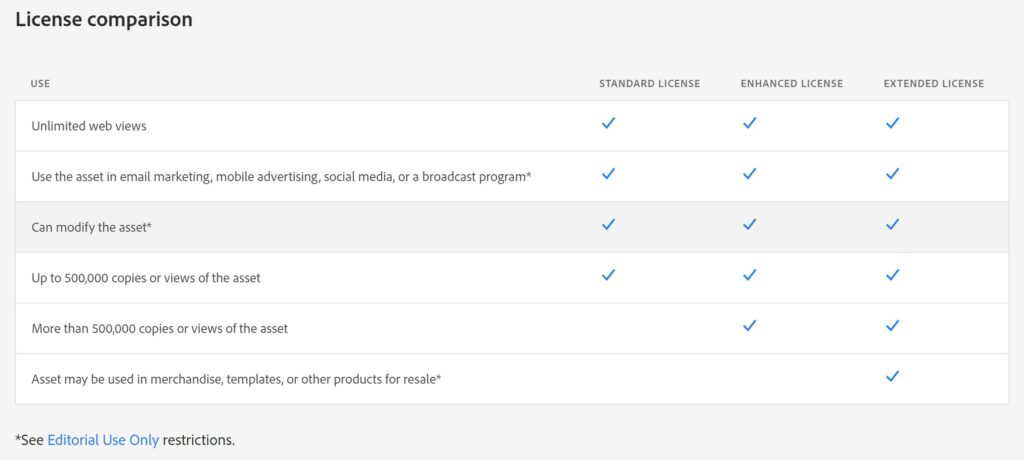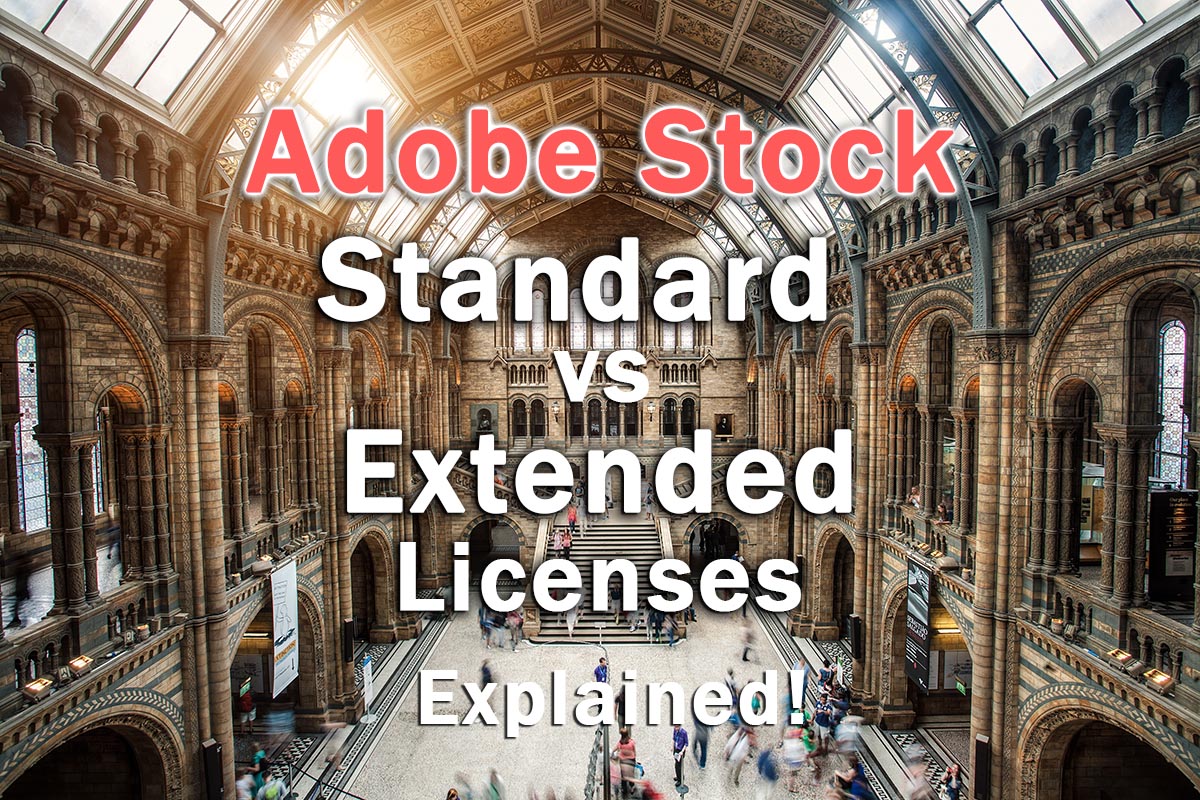Adobe Stock has become a go-to resource for creators, marketers, and designers looking for high-quality stock images, videos, and audio. Whether you're crafting a blog post, designing marketing materials, or creating a multimedia project, understanding how to navigate Adobe Stock licensing is crucial. One of the most important aspects to grasp is the difference between the various license types available, particularly if you want to make the most out of your visual assets.
Adobe Stock offers two primary types of licenses: Standard Licenses and Extended Licenses. Both licenses allow users to utilize the images in varying degrees, but each comes with its own set of rules and restrictions. Let’s dive deeper into what these licenses entail, starting from the basics to the extended options that give you even more creative freedom.
What is an Extended License?

An Extended License takes the limitations of a Standard License and broadens them, offering you more versatility and greater usage rights for the images you purchase. If you’re working on a project that requires extensive distribution or unique applications, an Extended License might be exactly what you need. Here’s a rundown of its benefits:
- Broader Usage Rights: Unlike the Standard License, which limits certain usages, the Extended License allows for unlimited print runs and usage in merchandise.
- Increased Distribution: With an Extended License, you can distribute your images in physical and digital formats without worrying about limitations.
- Inclusion in Products for Resale: If you’re creating designs for printable goods or items for resale, the Extended License makes this possible.
- Enhanced Flexibility: Whether for commercial or promotional purposes, you have more freedom in how you apply your visuals.
To give you a clearer picture, here’s a comparison of the two licenses:
| Feature | Standard License | Extended License |
|---|---|---|
| Commercial Use | Allowed with limitations | Allowed without limitations |
| Print Runs | up to 500,000 copies | No limit |
| Merchandise | Not allowed | Allowed |
| Web Use | Allowed | Allowed |
In essence, if your project could potentially reach a larger audience or involve detailed distribution, opting for an Extended License might be your best bet. It not only provides peace of mind but also allows for the utmost creativity in your work!
Also Read This: How to Be a Getty Images Photographer and Start Earning
Credit System Explained

The credit system in Adobe Stock is designed to offer flexibility and simplicity when it comes to purchasing images, videos, and other assets for your creative projects. Think of credits as a kind of currency that you can use to conveniently acquire the content you want. Each credit can be exchanged for various types of assets, and the amount of credits required usually depends on the type and size of the file you are purchasing.
So, how does this work in practice? Adobe Stock operates on a tiered pricing structure, which means that different assets will require different amounts of credits. Here's a basic breakdown:
- Standard License: Generally requires fewer credits.
- Extended License: Requires more credits due to the additional usage rights it provides.
One of the big benefits of using credits is that you can buy them in bulk. This can often reduce the cost per credit, making it more affordable for regular users. There are various plans available, such as:
| Credit Plan | Credits Included | Price |
|---|---|---|
| 10 Credits | 10 | $79.00 |
| 50 Credits | 50 | $379.00 |
| 100 Credits | 100 | $699.00 |
In summary, the credit system is designed to make purchasing easier, allowing you to stock up on credits and use them at your convenience for extended licenses and more!
Also Read This: Top Benefits of Using Imago Images for Your Business Visuals
How Many Credits for One Extended License Image?

If you're considering using an extended license image from Adobe Stock, you might be wondering just how many credits you'll need to spend. The extended license allows for broader usage rights than a standard license, including more extensive rights for things like promotional materials, merchandise, or even digital items that will be resold.
Typically, an extended license image will cost you double the number of credits when compared to a standard license. For instance, if a standard license image costs you 10 credits, the same image with an extended license would generally be around 20 credits. However, the exact number of credits can vary depending on the specific asset, so it's always a good idea to check the pricing details on Adobe Stock.
To give you a clearer idea, here’s a small comparison:
- Standard License Image: 10 Credits
- Extended License Image: 20 Credits
In summary, while extended licenses do require a higher credit expenditure, the additional flexibility and rights they offer can be worth the investment, especially if you plan on using the images in ways that go beyond personal or limited commercial use. Always assess your project needs to determine whether the investment in an extended license fits your strategy.
Also Read This: How to Shoot Photos for Getty Images and Get Noticed
Benefits of Using Extended Licenses
When it comes to sourcing images for your projects, choosing the right license is crucial, and the benefits of using Adobe Stock's Extended License can be quite compelling. Here's why you might want to consider the Extended License for your next creative endeavor:
- Broader Usage Rights: Extended licenses allow for more extensive use of images. This means you can utilize them for products that will be sold, including physical merchandise and digital downloads. Perfect for artists and entrepreneurs looking to turn their creations into revenue!
- Increased Flexibility: With an Extended License, you can incorporate images into your work without the constant worry about infringement. Whether it's a marketing campaign or a website redesign, your creative freedom expands significantly.
- No Cap on Sales: One of the standout features of the Extended License is that it removes the cap on the number of copies you can sell. If your product becomes a hot seller, you won't have to stress about licensing fees as you reach higher sales numbers.
- Credits Usage: Extended License credits are adaptable and can be applied to a variety of images. This flexibility allows you to curate a collection that fits your unique brand aesthetic without worrying about multiple license purchases.
- Legal Safety: Choosing an Extended License is akin to getting a security blanket for your project. It provides peace of mind regarding copyright concerns, ensuring you can focus entirely on your creative work.
Overall, the benefits of using Adobe Stock Extended Licenses are immense and can enhance your creativity while safeguarding your projects legally.
Conclusion
In summary, understanding Adobe Stock Extended License credits for images is crucial for anyone who wants to take their projects to the next level. The regular licenses serve the purpose for many creative projects, but the Extended License offers that additional layer of freedom and protection that can make a significant difference.
Whether you’re a small business owner, a graphic designer, or a content creator, these licenses can help you maximize your creative potential. Using an Extended License not only allows you to expand the scope of your projects but also grants you the confidence to monetize your work effectively.
Here are a few key points to remember:
| Key Benefit | Description |
|---|---|
| Broader Usage Rights | Use images for merchandise and products. |
| Increased Flexibility | Incorporate images in various types of projects. |
| No Cap on Sales | Sell any number of copies without additional fees. |
| Legal Safety | Minimize copyright concerns for your creations. |
So, if you're considering your options for stock images, don’t overlook the benefits that come with Extended Licenses. They may just be the key to unlocking your project's full potential!
 admin
admin








